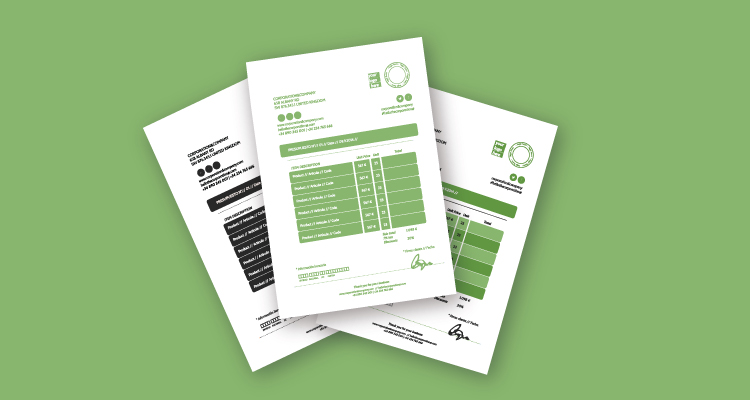To experience a thriving business, you need to make sure it is fiscally healthy and hydrated with plenty of cash flow. Feeding this fiscal health is your invoicing system, so what you put into it is what you will get out. To maintain it at optimum levels, you need to follow our daily recommended allowance known as the Invoicing Pyramid.
Let’s break down the areas we believe should be taken in the largest quantities, those that require smaller servings, and those that need to be used sparingly.
Table of Contents
ToggleInvoicing Pyramid Guide
Largest Dose
At the bottom of the invoicing pyramid are those things you should use in large doses to ensure that you are more likely to have a productive cash flow from your invoicing system. The biggest area is the professional image that you can convey through your invoices. Hand-printed or quick Word docs don’t suffice as professional invoices. They give the appearance that you didn’t put any thought and may take that same approach to all services you offer.
Instead, you can use any one of the free invoicing templates available online that offer a standardized look to your invoice. These are often easily customized with drag and drop features that allow you to place your logo on top of the invoice template. Don’t forget to also add your entire contact information, your client’s contact information, and the invoice number and date.
Sizable Servings
The next level of the invoicing pyramid brings you to some specific aspects of your invoicing system that are very important to convincing the client that they should pay:
- The due date provides your expectations about payment and should be clearly stated so that clients understand when you expect to be paid.
- Terms and conditions also further those expectations by providing information about any type of discount that is provided, conditions of sale, returns or penalties in the form of late fees that can be applied to the invoice.
- The description of products or services must be detailed, including itemized pricing for multiple items or projects. It is good to also include the date for which the product or service was provided.
- State what type of payment options you accept, including credit cards, payment portals, direct deposit or checks. Where possible, include a link directly to an online payment system as this often speeds the payment process. The more payment options you accept, the more likely you will be paid quickly.
Smaller Bites of the Invoicing Pyramid
As the invoicing pyramid begins to decrease toward the top, it means that these next steps in the process should be used in smaller quantities.
The first is selecting one software solution that can bring together all the other servings and doses found farther down on the invoicing pyramid. Solutions like Due offer all the features you need to make professional invoices that can be sent online via email to your clients along with a payment link option to sites like PayPal as well as give you a dashboard to track what is outstanding. This type of online invoicing tool also enables recurring invoices, payment reminder notices, and payment acknowledgements to be sent.
The second is that you should send out invoices as soon as you complete a project because this potentially speeds payment rather than waiting until the end of the month to do it. Of course, you may have certain arrangements with clients where you bill them incrementally so this is when those recurring invoices are helpful. Other invoices may always have different amounts and only be accepted on certain days by your clients so use an online invoicing tool to add in the details as you go, saving time and ensuring a more accurate billing amount by the time you can issue the invoice.
Only When Absolutely Needed
At the very top of the invoicing pyramid is one item at the very top, which is to follow-up with clients who have not paid. This is something that you need to do sooner than later if an invoice goes unpaid.
You cannot let it languish because that will quickly dehydrate your cash flow and create an unhealthy balance that could topple all those other things in your invoicing pyramid. Start by asking if they received the invoice and gently remind them of the payment terms to ensure they pay before you need to charge them for a late fee.
A Complete Prescription for Fiscal Health
When you follow this regimen for fiscal health, you can improve the performance of your invoicing system, generating greater cash flow that builds a stronger company and gives it the potential for a longer life.















